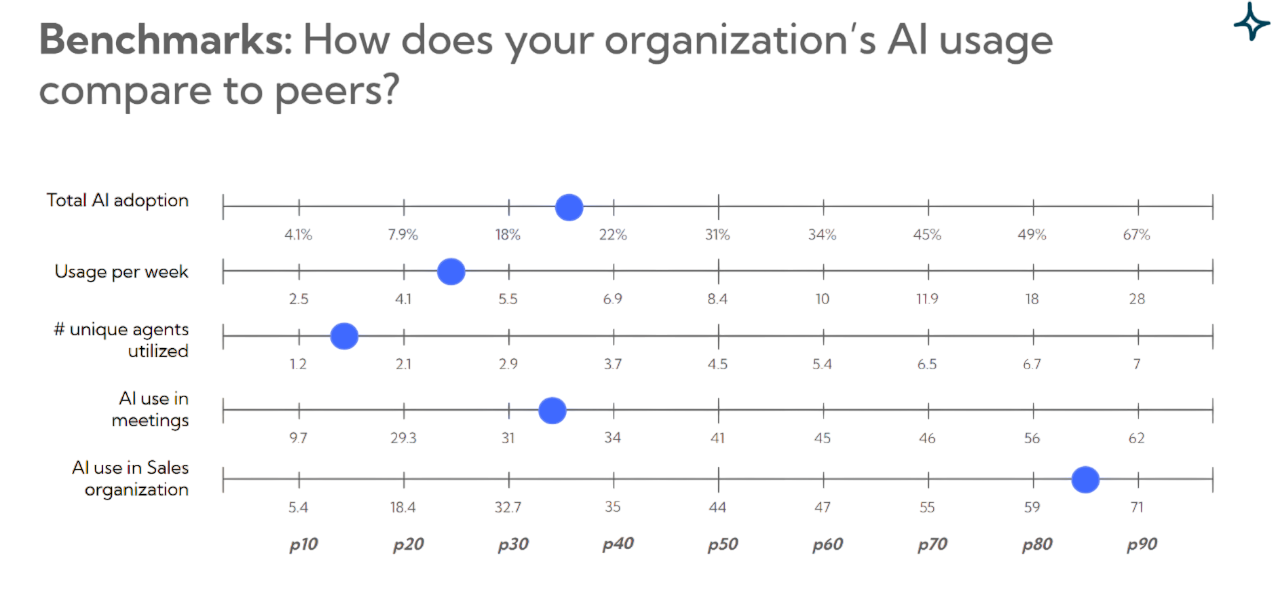ChatGPT and other generative AI tools have rapidly become fixtures in the modern workplace. Software developers use them to expedite coding tasks, marketers to draft content, customer support agents to resolve queries faster, and the list keeps growing. With such wide-ranging applications, understanding and optimizing ChatGPT usage has emerged as a critical priority for organizations. We'll explore why tracking ChatGPT usage matters, what metrics to watch, and how to drive more value from this technology across your teams.
Tracking how people use ChatGPT (and other AI tools) provides critical insights for decision-makers. It's not about spying or micromanaging – it's about understanding usage patterns so you can maximize the value of AI for your business.
Here are some key reasons why tracking ChatGPT usage is so valuable:
In summary, tracking usage provides the actionable data needed to guide your AI adoption strategy. It tells you where to focus your efforts – whether that's additional training for certain groups, allocating more resources to successful use cases, or addressing barriers holding back adoption.
Gathering usage data is only half the battle. The real goal is acting on those insights to boost adoption, improve effectiveness, and maximize return on investment. Here are strategies to turn metrics into meaningful improvements in ChatGPT usage and impact:
1. Double Down on What's Working: Identify the teams or individuals who have successfully woven ChatGPT into their workflows – your power users. What are they doing differently? Perhaps your customer support team that uses ChatGPT to draft responses has cut resolution times by 20%, or an engineering squad is shipping features faster thanks to AI-assisted coding. Capture these success stories and best practices and propagate them.
2. Support the Laggards: Equally, look at teams or roles with low ChatGPT usage and investigate why. Is it a lack of awareness, a lack of applicable use cases, or perhaps distrust of the tool? Directly reaching out to those groups can uncover the root cause. For example, if your data shows the Operations team barely touches AI, perhaps they feel the tools are too technical or not relevant. Targeted training and coaching can significantly raise confidence and proficiency. The key is to lower the barrier to entry for hesitant users by addressing their specific concerns or skill gaps.
3. Leverage Management to Drive Adoption: When managers visibly champion AI adoption – mentioning in meetings how they used ChatGPT for a task, or challenging their team to find one new AI use this week – it sends a powerful message. Culture flows from the top: a manager adept with ChatGPT can cultivate a team culture that is eager to experiment and optimize with AI.
4. Integrate AI into Everyday Workflow: This might mean using ChatGPT plugins within tools like Slack, Microsoft Teams, VS Code, or other software where employees already spend time. If the AI is one click away inside their email or IDE, they're more likely to use it frequently than if it's a separate app. Integration also allows for easier tracking of usage in context. Additionally, encourage teams to incorporate AI steps into their standard processes, for example:
By normalizing ChatGPT as part of the SOP, you move usage from novelty to habit.
5. Provide Clear Guidelines and Address Concerns: Optimizing usage isn't just about more usage – it's about effective and responsible usage. Some employees may refrain from using ChatGPT due to legitimate concerns: data privacy, accuracy of AI outputs, or uncertainty about what's allowed. Many employees want oversight and guidance. Guidelines can cover things like verifying AI outputs for factual accuracy, protecting confidential data, and maintaining human judgment over the final results. When people know the guardrails, they use the tool with more confidence, leading to higher adoption.
6. Set Targets and Monitor Progress: Just as you might set KPIs for any business initiative, set targets for ChatGPT usage and its outcomes, and regularly review them. For example, aim to have 75% of the company use ChatGPT at least weekly by next quarter, or aim for a 30% reduction in average time to complete certain tasks with AI assistance. Track these metrics month over month. Treat this as an iterative process: measure baseline → implement improvement → measure again to see if it moved the needle. Continuous improvement loops ensure that ChatGPT adoption doesn't stagnate after the initial push but keeps growing and delivering value.
7. Quantify and Communicate ROI: To keep leadership support strong, continuously measure the ROI of ChatGPT usage and communicate the impact. This involves translating usage and performance data into business outcomes. Many companies initially might not see direct cost ROI, but time saved is money if you can redeploy that time to valuable work. Over the long run, as employees become adept and the organization restructures workflows around AI, the productivity gains do convert to real financial returns.
To effectively track and optimize ChatGPT (and overall AI) usage at scale, specialized tools can greatly help. Worklytics is one such solution designed for organizations to measure and improve how AI is adopted across their workforce. It serves as an AI usage analytics and insights platform, answering the key questions we've discussed: Who is using AI and how often? Which teams are ahead or behind? What impact is it having on productivity? Here's how a tool like Worklytics can empower your ChatGPT optimization journey:

In summary, Worklytics provides the precise measurement, actionable insights, and privacy safeguards needed to scale ChatGPT usage in an organization successfully. By using data from Worklytics' AI Adoption Dashboard, HR and people analytics teams, as well as engineering or operations leaders, can pinpoint where to intervene, see what's working, and continually refine their approach.